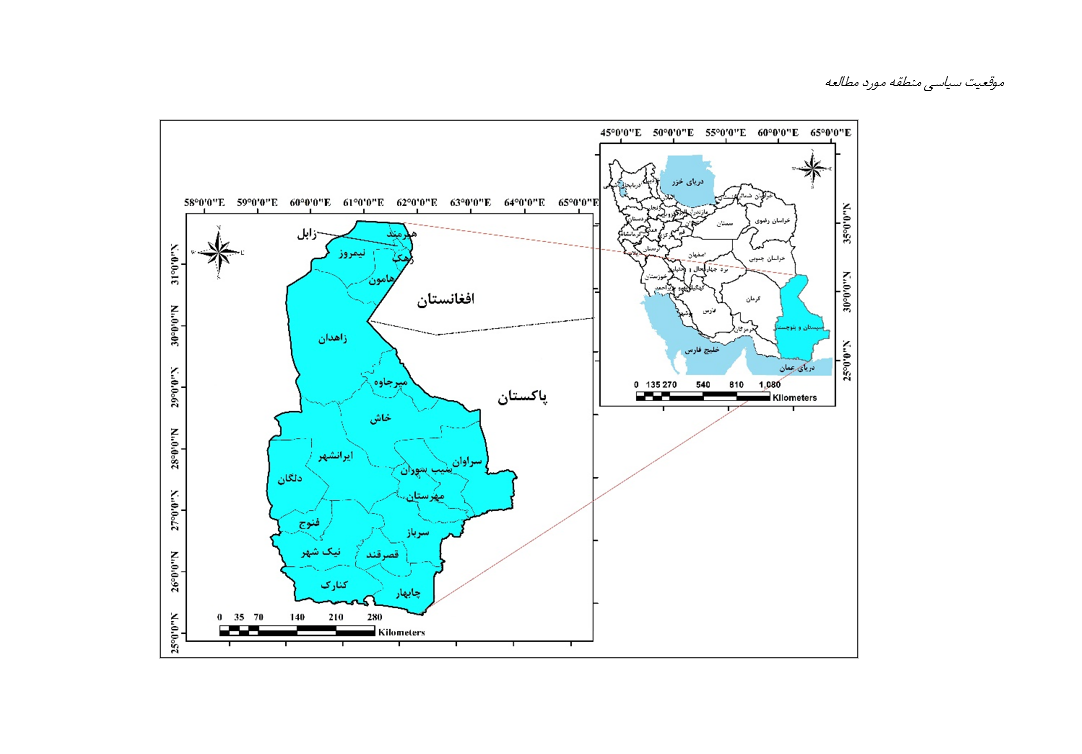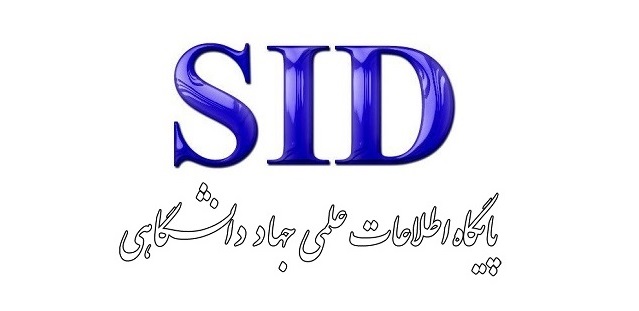Qualitative Analysis of the Political and Sociological Factors of Convergence and Divergence among the Baloch Ethnic Group
Keywords:
Sociological factors, convergence and divergence, Baloch people, grand theory, southeast IranAbstract
The present study aims to identify the sociological factors contributing to convergence and divergence among the Baloch ethnic group. In terms of purpose, this research is applied, and in terms of methodology, it belongs to the category of qualitative methods. The data collection instrument was structured interviews conducted with experts. The statistical population consisted of specialists and scholars in political science and sociology. Using the Delphi method and based on theoretical saturation, 15 experts were selected for interviews. For data analysis, qualitative analysis and interview coding were conducted using MAXQDA software. The findings of the study regarding the sociological factors of convergence and divergence among the Baloch ethnic group led to the identification of 50 concepts through open coding, 17 axial categories and sub-components through axial coding, and 2 selective categories and main components through selective coding. Based on the coding results, eight key factors were identified as the most important drivers of convergence among the Baloch in southeastern Iran: (1) equitable developmental policies by the government in Balochistan, (2) political participation of the Baloch ethnic group, (3) security and political stability in Balochistan, (4) religious and identity-based commonalities of the Baloch with other ethnic groups, (5) the role of media and education in Baloch ethnic integration, (6) Baloch interethnic relations and interethnic marriages, (7) border trade in Balochistan and the creation of job opportunities, and (8) the positive role of Baloch elites. Furthermore, nine primary factors were identified as the main contributors to divergence among the Baloch in the southeastern region of the country: (1) systematic discrimination and inequality in Balochistan, (2) opposition groups in Balochistan, (3) poverty and deprivation in Sistan and Balochistan Province, (4) smuggling and the informal economy in Balochistan, (5) linguistic, ethnic, and cultural conflicts, (6) religious differences, (7) Baloch traditionalism versus urbanization and identity change, (8) the negative influence of foreign actors on the Baloch ethnic group, and (9) the rise of extremist Baloch nationalism.
Downloads
References
Afzali, R., Mahmoudi, A., & Bagheri, A. (2023). Explaining the Ethnic Policies of the Islamic Republic of Iran in Popular Films Using the Content Analysis Method. International Journal of Geopolitics, 19(69), 33-68.
Bagheri, M., Navah, A., & Shojaei Boroujerdi, H. (2022). Structural Modeling of Cultural, Social, and Political Factors Affecting Inter-Ethnic Convergence in Ahvaz City. Strategic Research on Social Issues, 11(3), 39-66.
Barzgar, N., Lotfi, H., Hasanabadi, D., & Rezvanian, M. T. (2019). The Role of Ethnic and Religious Policies in the Participation of Ethnic Groups in Security, Comprehensive Development, and Convergence with Emphasis on the Turkmen of North and Northeast Iran. Geography Quarterly (Regional Planning), 9(34), 433-455.
Chilla, T. E. E. S. C., & Cortés Landazury, R. H. (2012). On the territoriality of cross-border cooperation: Institutional Mapping in a multi-level context Institutions, ethnicity and conflict: behind social cohesion and fragmentation in the Department of Cauca. European Planning Studies, 20, 961-980. https://doi.org/10.1080/09654313.2012.673563 10.18601/01245996.v26n50.08
Darvishi, A. (2016). National Convergence of the Baloch People in the Context of Institution-Building of Jihad University (University of Isfahan).
Dashti, F. (2021). Investigating the Political-Security Factors Effective in Promoting the Convergence of Iranian Ethnic Groups; Towards Sustainable Security. Contemporary Socio-Political Developments in Iran Quarterly, 1(1), 112-136.
Doyle, O., Kenny, D., & McCrudden, C. (2024). Law and Religion: Convergence and Divergence on the Island of Ireland. Irish Studies in International Affairs, 35(2SP - 198), 240. https://doi.org/10.1353/isia.2024.a937171
Faraji, B., Hosseini, S. M., & Keramat, M. (2015). Factors of National Convergence of Ethnic Groups and Its Impact on the Sustainable Security of the Islamic Republic of Iran.
Guha, A. (2024). Hindu Nationalism and the Converging, Diverging and Intersecting Identities of Caste and Race in India: Dialogue, Dilemma and Discourse. Journal of Asian and African Studies, 24(3), 20-41. https://doi.org/10.1177/00219096241275409
Jahan Abadian, A., Kahrazeh, Y., & Mirlotfi, P. (2025). Investigating and Analyzing the Factors and Drivers Affecting National Convergence and Cohesion (Case Study: Baloch People in the Southeast of the Country). Applied Research in Geographical Sciences, 25(76), 162-177. https://doi.org/10.61186/jgs.25.76.14
Jokar, K., Bakhshayeshi Ardastani, A., Bagheri, F., & Allahkaram, A. (2021). Investigating the Status of Divergence and Convergence of Ethnic and Religious Minorities in the Country (Kurdish and Baloch Regions). Sustainable Development of the Geographical Environment, 3(5), 127-144.
Kazakova, M. V. (2018). Factors of convergence and divergence in the global economy: a brief review. Administrative Consulting, 1(7), 15-33. https://doi.org/10.22394/1726-1139-2018-7-96-110
Kim, Y. Y. (2017). Contextual theory of interethnic communication Oxford Research Encyclopedia of Communication. https://doi.org/10.1093/acrefore/9780190228613.013.493
Koushki, A., & Toulabi-Nejad, M. (2020). Sustainable Planning for the Development of Border Region Cooperation (CBC): Factors and Drivers Affecting the Sustainability of Border Region Unity. Journal of Applied Research in Geographical Sciences, 20(56), 115-140. https://doi.org/10.29252/jgs.20.56.115
Kurowska-Pysz, J. A. C. R., & Loures, L. (2018). Sustainable Planning of Cross-Border Cooperation: A Strategy for Alliances in Border Cities. Sustainability, 10(5), 1-26. https://doi.org/10.3390/su10051416
Lashkari, S., Mirferdi, A., Ahmadi, H., & Ahmadi, A. Y. (2024). Investigating the Relationship Between the Feeling of Relative Deprivation and Tribal Divergence in Mamasani and Rostam Counties. Applied Sociology, 35(1), 139-163.
Mason, T. D., & Galbreath, D. (2013). Ethnicity and politics Encyclopedia of Government and Politics.
Mirlotfi, M., Alavizad, S. A. M., & Hedayati-Amin, K. (2015). Investigating Social Cohesion in Maintaining Border Security with Emphasis on Ethnic and Religious Diversity (Case Study: Zabol County). Regional Planning Quarterly, 5(16), 57-70ER -.
Motagghi Dastnai, A., & Sepehvand, A. (2024). Future Studies of the Impacts of Virtual Networks on Political Orientation (Case Study: Lorestan Province)JO - National Studies Quarterly. 25(99), 35-59.
Najafpour, S., Tadayyon Rad, A., & Al-e Seyyed Ghafour, S. M. (2023). National Identity; Examining the Ethnic Factors Affecting the Divergent Behaviors of Youth (Case Study: 18 to 30 Year Old Youth in Ahvaz). Strategic Studies of Sports and Youth, 22(62), 453-478.
Pishgahi-Fard, Z. (2009). The Relationship Between the Dispersion of Iranian Ethnic Groups and Border Security. Geopolitics Quarterly, 5(1), 47-71.
Saba, C. S. (2021). Convergence or divergence patterns in global defence spending: further evidence from a nonlinear single factor model. Peace Economics, Peace Science and Public Policy, 27(1), 51-90. https://doi.org/10.1515/peps-2021-0017 10.1515/peps-2020-0012
Saglam, Y., & Önkan, Ö. (2025). Income Convergence and Divergence in European Regions: Insights and Policy Implications. Panoeconomicus, 1-28. https://doi.org/10.2298/PAN240925004S
Seifoddini, H. (2018). An Introduction to the Marxist Backgrounds of the National Question in Iran 1921-1979. National Studies Quarterly, 19(73), 35-56.
Smith, W. L. (2020). A divergence of interests: Critical race theory and white privilege pedagogy. Teachers College Record, 122(1), 1-24. https://doi.org/10.1177/016146812012200103
Statistical Yearbook of, S., & Baluchestan, P. (2015). Statistical Yearbook of Sistan and Baluchestan Province. Statistics and Population Section.
Suri, A., Alaei, S., & Rahmani, J. (2024). Presenting a Model of Cultural Adaptation of the Lur People in the Last Decade of the Fourteenth Century. Intercultural Studies, 19(58), 149-166.
Tramel, S. (2020). Convergence as political strategy: social justice movements, natural resources and climate change Converging social justice issues and movements. https://doi.org/10.4324/9781003000969-4
Whitehead, K., & Stokoe, E. (2015). Producing and responding to -isms in interaction. Journal of Language and Social Psychology, 34(4), 368-373. https://doi.org/10.1177/0261927X15586432
Zohairinia, M. (2023). Ethnic Identity in Iranian Society: Convergence or Divergence (Systematic Review of Quantitative Studies from 2001 to 2022). Social Issues of Iran, 14(2), 227-252. https://doi.org/10.61186/jspi.14.2.227ER -

Published
Submitted
Revised
Accepted
Issue
Section
License
Copyright (c) 2025 Abbas Jahanabadian (Author); Yaser Kahrazeh; Parvizreza Mirlotfi (Author)

This work is licensed under a Creative Commons Attribution-NonCommercial 4.0 International License.







